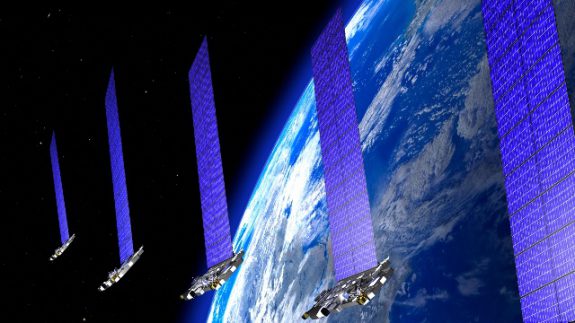

Around a 64 per cent of people in the world’s least developed countries (LDC) are still offline in least developed countries writes Hamish White, CEO of SaaS solutions provider Mobilise
This equates to 720 million people , or 27 per cent of the global offline population, even though the these countries population makes up just 14 per cent of the world’s population. The UN classifies 46 countries tas least developed. Of these, 33 are in Africa, nine are in Asia, one is in the Caribbean and three are located in the Pacific, he writes.
According to ITU data, 58 per cent of people in these countries owned a mobile phone in 2022. This is close to the global average, which sits at 73 per cent. Data for mobile cellular subscriptions paints a similar picture. The average of 79 subscriptions per 100 inhabitants isn’t too far from to the world average of 108. Where we really see a gap, however, is with mobile broadband with 42 subscriptions per 100 inhabitants in the LDCs compared with 87 for the world. In part, this is because the necessary infrastructure to access a mobile broadband network is missing.
The internet can be accessed via fixed broadband and mobile access. Mobile access provides deployment and coverage flexibility that cannot be matched using fixed broadband, which is typically unaffordable or completely unavailable in rural areas. Therefore, mobile connectivity is the only feasible pathway to internet access. However, simply having a mobile phone is no good if the area has no network coverage, and this is where the problem with rural connectivity lies.
The benefits of connectivity
As a society, we should help close the digital divide because it’s the right thing to do. But additionally, there are several other benefits to bridging the divide that impact both LDCs and the wider, global society.
The digital economy makes up over 15 per cent of global GDP, growing two and a half times faster than total GDP over the past 15 years. It is considered one of the most important drivers of innovation, growth and job creation in today’s society. Closing the gap, therefore, will add significant value. According to research from the UN, a 10 per cent increase in the penetration of mobile broadband services increases GDP by 1.5 per cent.
It’s widely cited that 92 per cent of jobs today require some form of digital competency. In an increasingly digital world, access to the internet means access to opportunity. Implementing a digital economy creates opportunities for nations to increase productivity, promote innovation and participate in global trade. The entire world experienced a reliance on digital tools during the pandemic. In a post-pandemic world, we can see how the increase in digitalisation has driven a permanent shift in behaviour as individuals with internet access make use of digital services widening the gap for those that do not.
Closing the gap
But why hasn’t the digital divide been fixed yet? Solving it is a complex, layered challenge as telcos work to expand coverage in a profitable way while navigating a challenging regulatory environment.
Areas with little coverage, such as those in rural areas, tend to lack the infrastructure required to build a network in the first place, making expansion difficult for mobile operators. Tough terrain, like areas with dense forest and vast mountain ranges, can add further implications. Additionally, when we consider the number of people living in their areas, it’s easy to see why operators struggle to see a return on investment from such an expansion.
A big challenge lies in backhaul connectivity, which refers to the portion of the network that links a base station to the core network. Traditional backhaul connectivity is achieved through microwave technology or physical full fibre cables, but in rural areas, where there may just be a handful of people, the distance, terrain and cost of implementation make these strategies unviable.
Mobile operators also have the obstacles of hampering regulation. Many regulatory policies are actually negatively impacting the growth of the telecoms market, such as spectrum auctions where governments sell parts of the spectrum to the highest bidding operator.
Spectrum auctions hinder innovation. Since operators heavily invest in their spectrum, they are more likely to implement a protectionist strategy to safeguard profits, rather than opting for a riskier but more innovative strategy that could promote greater levels of rural connectivity.
But regulations don’t have to act as blockades. Throughout the pandemic, we saw the positive effects that more supportive regulations can have on the telecoms landscape. For example, in Ghana and Jordan network operators were granted temporary access to spectrum and in Tunisia spectrum bands were made technology neutral, which helped to maintain 2G, 3G and 4G connectivity while also rolling out 5G.
Connecting with Low Eerth Orbit satellotes
With regulatory and economic barriers in mind, operators must consider other ways of reaching LDCs and other areas without sufficient connectivity. Rather than relying on traditional backhaul connectivity methods, the solution could lie in a low Earth orbit (LEO) satellite network.

Instead of connecting each individual small village with microwave or fibre, a LEO satellite network allows blanket global coverage for backhaul purposes. LEO satellites consist of many thousands of satellites orbiting at altitudes between 160 and 1,600 kilometres above Earth, which allows them to offer bandwidth and latency that can compete with existing fixed broadband technologies like fibreoptic cables, in certain environments.
In recent years, we’ve seen companies around the world compete in the LEO “space race”. In fact, Space X’s Starlink is already functional and offering internet service. Amazon’s Project Kuiper also plans to make connectivity possible for underserved communities in the next few years, with its first set of satellites planned to launch in 2024.
Enter eSIM
It’s also worth considering how digital tools can in turn support rural connectivity with LEO. Onboarding remote customers is not a simple task — going to a store to collect a device and SIM card, or even arranging delivery isn’t always viable. However, an eSIM solution enables service providers to establish a remote onboarding process to connect their customers without the need for any physical interactions.
eSIMs are growing in popularity, particularly following the launch of the eSIM-only iPhone 14 in the US in 2022. Rumours are already swirling that the iPhone 15, due to launch in September, will be eSIM-only across the globe and, while the iPhone is a premium device, the shift will certainly set a precedent for more widely affordable handset manufacturers to produce eSIM-compatible devices.

Mobile connectivity is becoming available to more and more people every day. However, in a world increasingly dependent on digital technologies, enabling connectivity across LDCs has become a pressing issue. We are all responsible.







